VW Tiguan vs Lamborghini Urus – Differences & prices compared
Two cars, one duel: VW Tiguan meets Lamborghini Urus.
Which one wins in performance, efficiency and value for money? Find out now!
Costs and Efficiency:
Price and efficiency are often the first things buyers look at. Here it becomes clear which model has the long-term edge – whether at the pump, the plug, or in purchase price.
VW Tiguan has a clearly advantage in terms of price – it starts at 32800 £, while the Lamborghini Urus costs 199400 £. That’s a price difference of around 166663 £.
Fuel consumption also shows a difference: VW Tiguan manages with 0.40 L and is therefore significantly more efficient than the Lamborghini Urus with 2.10 L. The difference is about 1.70 L per 100 km.
As for range, the VW Tiguan performs convincingly better – achieving up to 129 km, about 69 km more than the Lamborghini Urus.
Engine and Performance:
Power, torque and acceleration say a lot about how a car feels on the road. This is where you see which model delivers more driving dynamics.
When it comes to engine power, the Lamborghini Urus has a clearly edge – offering 800 HP compared to 272 HP. That’s roughly 528 HP more horsepower.
In acceleration from 0 to 100 km/h, the Lamborghini Urus is convincingly quicker – completing the sprint in 3.30 s, while the VW Tiguan takes 5.90 s. That’s about 2.60 s faster.
In terms of top speed, the Lamborghini Urus performs evident better – reaching 312 km/h, while the VW Tiguan tops out at 242 km/h. The difference is around 70 km/h.
There’s also a difference in torque: Lamborghini Urus pulls significantly stronger with 950 Nm compared to 400 Nm. That’s about 550 Nm difference.
Space and Everyday Use:
Beyond pure performance, interior space and usability matter most in daily life. This is where you see which car is more practical and versatile.
Both vehicles offer seating for 5 people.
In curb weight, VW Tiguan is noticeable lighter – 1599 kg compared to 2150 kg. The difference is around 551 kg.
In terms of boot space, the VW Tiguan offers slight more room – 652 L compared to 616 L. That’s a difference of about 36 L.
In maximum load capacity, the VW Tiguan performs barely noticeable better – up to 1650 L, which is about 54 L more than the Lamborghini Urus.
When it comes to payload, VW Tiguan noticeable takes the win – 533 kg compared to 350 kg. That’s a difference of about 183 kg.
Who comes out on top?
Overall, the VW Tiguan shows itself to be wins the duel decisively and secures the title of DriveDuel Champion.
It convinces with the more balanced overall package and proves to be the more versatile choice for everyday use.
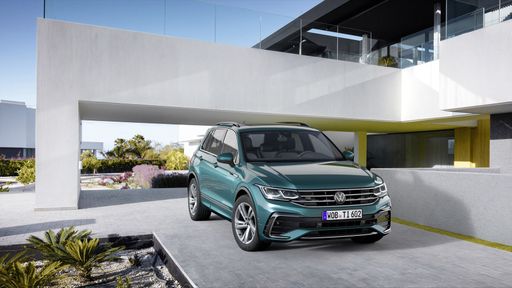
VW Tiguan
VW Tiguan
The VW Tiguan presents itself as a versatile and practical option in the SUV market, combining a stylish design with a spacious and comfortable interior. It offers a smooth driving experience, making it well-suited for both urban environments and longer journeys. With its focus on safety and innovative technology features, the Tiguan remains a compelling choice for families and adventurers alike.
details @ Volkswagen
@ Volkswagen
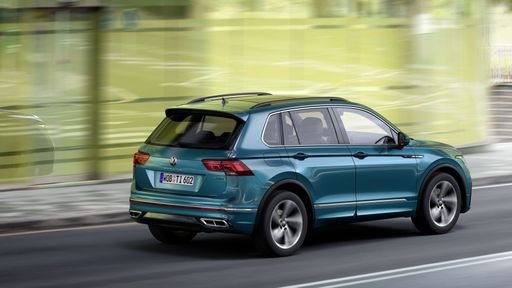 @ Volkswagen
@ Volkswagen
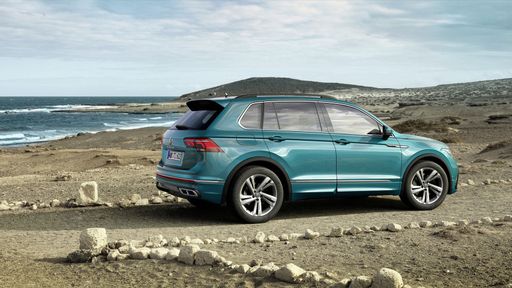 @ Volkswagen
@ Volkswagen
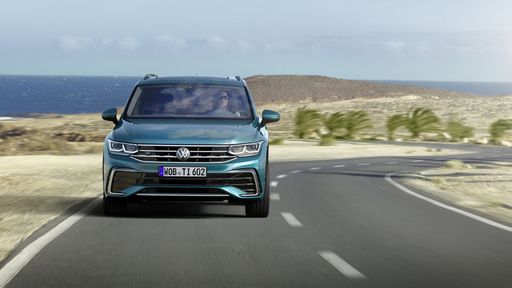 @ Volkswagen
@ Volkswagen
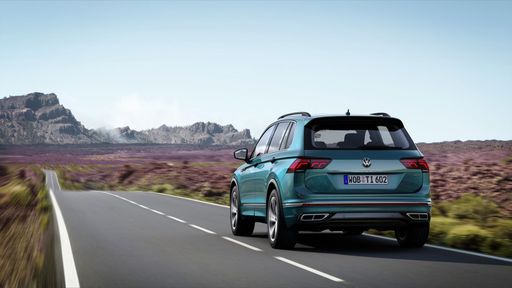 @ Volkswagen
@ Volkswagen
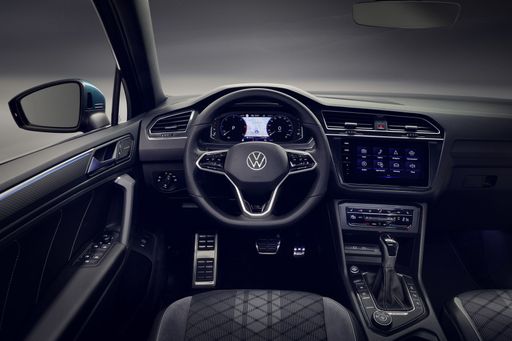 @ Volkswagen
@ Volkswagen
Lamborghini Urus
The Lamborghini Urus is a striking blend of performance, luxury, and versatility, embodying the spirit of a supercar in a high-performance SUV form. Its bold design and aggressive lines make a statement on the road, ensuring it stands out in any environment. Inside, the Urus combines premium materials with cutting-edge technology, offering a driving experience that is both exhilarating and comfortable.
details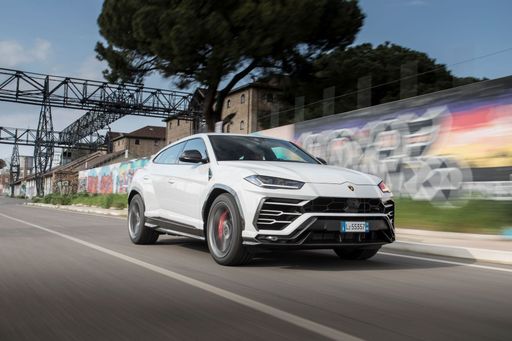 @ Automobili Lamborghini S.p.A.
@ Automobili Lamborghini S.p.A.
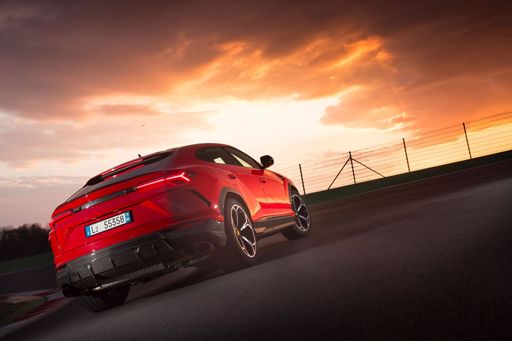 @ Automobili Lamborghini S.p.A.
@ Automobili Lamborghini S.p.A.
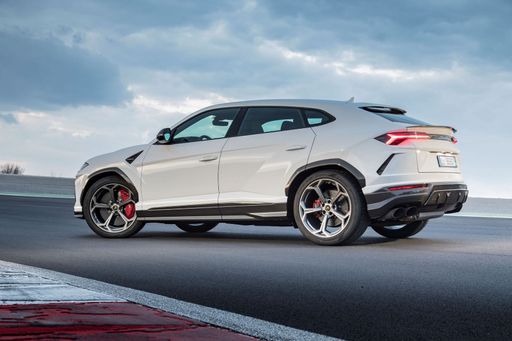 @ Automobili Lamborghini S.p.A.
@ Automobili Lamborghini S.p.A.
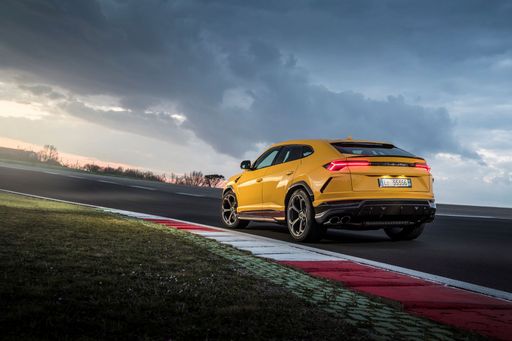 @ Automobili Lamborghini S.p.A.
@ Automobili Lamborghini S.p.A.
 @ Automobili Lamborghini S.p.A.
@ Automobili Lamborghini S.p.A.
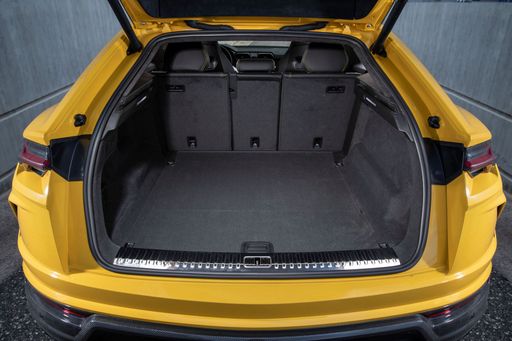 @ Automobili Lamborghini S.p.A.
@ Automobili Lamborghini S.p.A.

|

|
|
|
|
Costs and Consumption |
|
|---|---|
|
Price
32800 - 51900 £
|
Price
199400 - 257100 £
|
|
Consumption L/100km
0.4 - 8.4 L
|
Consumption L/100km
2.1 - 14.1 L
|
|
Consumption kWh/100km
-
|
Consumption kWh/100km
-
|
|
Electric Range
119 - 129 km
|
Electric Range
60 km
|
|
Battery Capacity
19.70 kWh
|
Battery Capacity
-
|
|
co2
8 - 190 g/km
|
co2
51 - 320 g/km
|
|
Fuel tank capacity
45 - 58 L
|
Fuel tank capacity
85 L
|
Dimensions and Body |
|
|---|---|
|
Body Type
SUV
|
Body Type
SUV
|
|
Seats
5
|
Seats
5
|
|
Doors
5
|
Doors
5
|
|
Curb weight
1599 - 1890 kg
|
Curb weight
2150 - 2405 kg
|
|
Trunk capacity
490 - 652 L
|
Trunk capacity
454 - 616 L
|
|
Length
4539 mm
|
Length
5112 - 5137 mm
|
|
Width
1842 - 1859 mm
|
Width
2018 - 2026 mm
|
|
Height
1656 - 1658 mm
|
Height
1618 - 1638 mm
|
|
Max trunk capacity
1486 - 1650 L
|
Max trunk capacity
1596 L
|
|
Payload
460 - 533 kg
|
Payload
100 - 350 kg
|
Engine and Performance |
|
|---|---|
|
Engine Type
Plugin Hybrid, Petrol, Petrol MHEV, Diesel
|
Engine Type
Petrol, Plugin Hybrid
|
|
Transmission
Automatic
|
Transmission
Automatic
|
|
Transmission Detail
Dual-Clutch Automatic
|
Transmission Detail
Automatic Gearbox
|
|
Drive Type
Front-Wheel Drive, All-Wheel Drive
|
Drive Type
All-Wheel Drive
|
|
Power HP
130 - 272 HP
|
Power HP
666 - 800 HP
|
|
Acceleration 0-100km/h
5.9 - 10.6 s
|
Acceleration 0-100km/h
3.3 - 3.5 s
|
|
Max Speed
198 - 242 km/h
|
Max Speed
305 - 312 km/h
|
|
Torque
220 - 400 Nm
|
Torque
850 - 950 Nm
|
|
Number of Cylinders
4
|
Number of Cylinders
8
|
|
Power kW
96 - 200 kW
|
Power kW
490 - 588 kW
|
|
Engine capacity
1498 - 1984 cm3
|
Engine capacity
3996 cm3
|
General |
|
|---|---|
|
Model Year
2024 - 2025
|
Model Year
2022 - 2024
|
|
CO2 Efficiency Class
B, G, D, E, F
|
CO2 Efficiency Class
G, B
|
|
Brand
VW
|
Brand
Lamborghini
|
What drivetrain options does the VW Tiguan have?
The VW Tiguan is offered with Front-Wheel Drive or All-Wheel Drive.
The prices and data displayed are estimates based on German list prices and may vary by country. This information is not legally binding.
